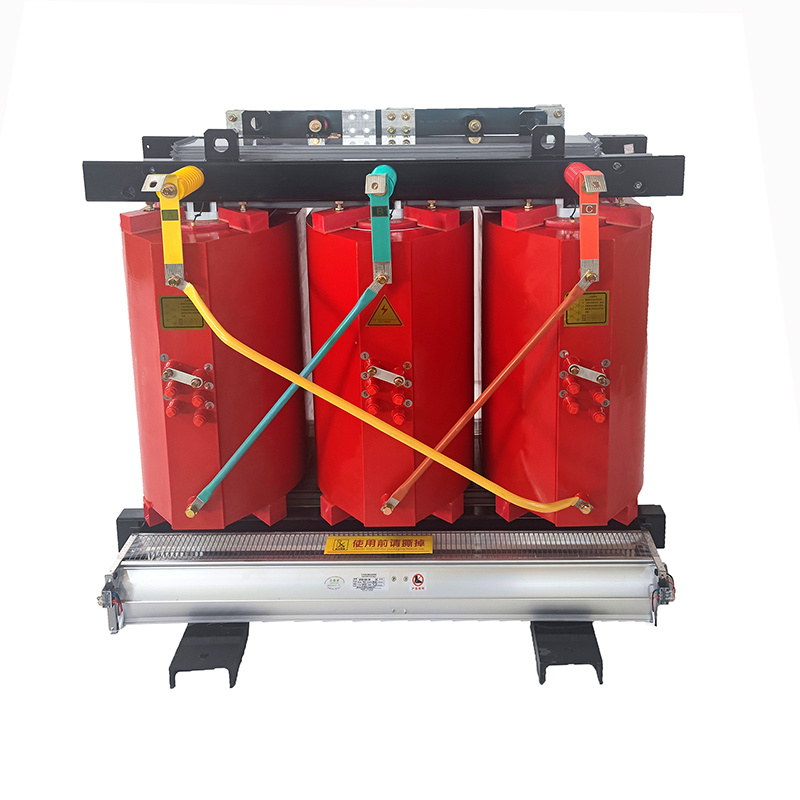Understanding 3 Phase Pole Transformers: A Comprehensive Guide
A 3 phase pole transformer is an essential device used in electrical engineering for stepping up or stepping down voltages in three-phase power distribution systems. These transformers are typically mounted on utility poles, providing an efficient means of transferring electrical energy from one circuit to another, while ensuring that power is delivered reliably and safely.
The fundamental princip
A 3 phase pole transformer is an essential device used in electrical engineering for stepping up or stepping down voltages in three-phase power distribution systems. These transformers are typically mounted on utility poles, providing an efficient means of transferring electrical energy from one circuit to another, while ensuring that power is delivered reliably and safely.
The fundamental principle behind a 3 phase pole transformer lies in its ability to convert three-phase electrical power into a different voltage level. This is crucial for various applications, particularly in industrial and commercial settings where three-phase power is prevalent. The construction of these transformers generally includes three primary windings—one for each phase—and a magnetic core to facilitate the transfer of electromagnetic energy.
One significant advantage of using a 3 phase pole transformer is its efficiency in handling large amounts of electrical power. These transformers are designed to minimize energy losses, making them particularly effective for long-distance power transmission. As electricity travels over extended distances, voltage drops can occur; hence, transformers are strategically placed to mitigate this issue and ensure the delivery of quality power supply.
3 phase pole transformers also play a vital role in balancing loads across the three phases. An unbalanced load can lead to overheating and eventual failure of electrical components, so these transformers help maintain stability in the power supply. By ensuring that each phase carries a balanced load, they enhance the overall performance and longevity of the electrical system.
Moreover, these transformers are often equipped with protective features, such as fuses and circuit breakers, to safeguard against overloads and short circuits. This additional layer of protection is crucial in preventing damage to both the transformer and connected equipment.
In terms of applications, 3 phase pole transformers are widely used in various sectors, including manufacturing, mining, and commercial enterprises. They are essential for providing power to large machinery, motors, and other industrial equipment, thereby supporting the smooth operation of business activities.
In conclusion, a 3 phase pole transformer serves as a fundamental component in electrical power distribution systems. Its ability to efficiently step up or step down voltage levels, maintain load balance, and enhance system reliability makes it indispensable in modern electrical networks. By understanding the role and functionality of these transformers, professionals can ensure optimal performance in their electrical installations and contribute to the advancement of electrical engineering.
The fundamental principle behind a 3 phase pole transformer lies in its ability to convert three-phase electrical power into a different voltage level. This is crucial for various applications, particularly in industrial and commercial settings where three-phase power is prevalent. The construction of these transformers generally includes three primary windings—one for each phase—and a magnetic core to facilitate the transfer of electromagnetic energy.
One significant advantage of using a 3 phase pole transformer is its efficiency in handling large amounts of electrical power. These transformers are designed to minimize energy losses, making them particularly effective for long-distance power transmission. As electricity travels over extended distances, voltage drops can occur; hence, transformers are strategically placed to mitigate this issue and ensure the delivery of quality power supply.
3 phase pole transformers also play a vital role in balancing loads across the three phases. An unbalanced load can lead to overheating and eventual failure of electrical components, so these transformers help maintain stability in the power supply. By ensuring that each phase carries a balanced load, they enhance the overall performance and longevity of the electrical system.
Moreover, these transformers are often equipped with protective features, such as fuses and circuit breakers, to safeguard against overloads and short circuits. This additional layer of protection is crucial in preventing damage to both the transformer and connected equipment.
In terms of applications, 3 phase pole transformers are widely used in various sectors, including manufacturing, mining, and commercial enterprises. They are essential for providing power to large machinery, motors, and other industrial equipment, thereby supporting the smooth operation of business activities.
In conclusion, a 3 phase pole transformer serves as a fundamental component in electrical power distribution systems. Its ability to efficiently step up or step down voltage levels, maintain load balance, and enhance system reliability makes it indispensable in modern electrical networks. By understanding the role and functionality of these transformers, professionals can ensure optimal performance in their electrical installations and contribute to the advancement of electrical engineering.
Key words:
Recommended
Understanding Dry Type Step Down Transformers: Key Insights for Electrical Applications
---
Dry type step down transformers play a crucial role in electrical systems, serving to reduce voltage levels while maintaining the efficiency of power distribution. Unlike oil-filled transformers, dry type transformers utilize air as a coolant, making them a safer and more environmentally friendly option. These transformers are designed to step down high voltage from the primary side to a lower







